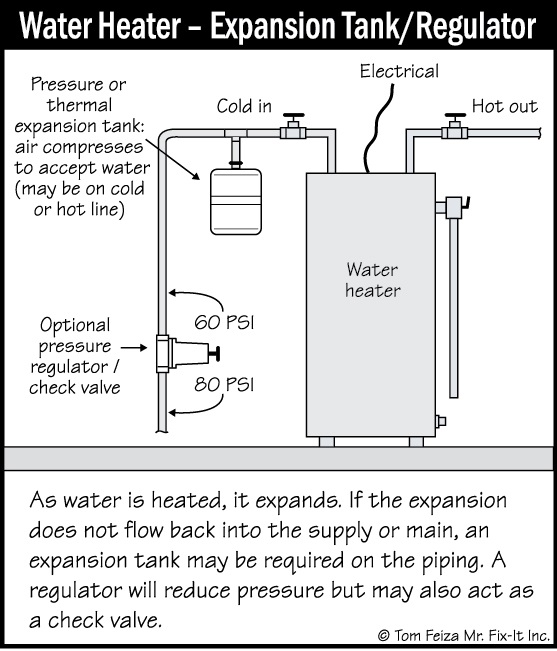“Relief valve discharge.” Just try to work that phrase into everyday conversation. It’s not easy!
As a home inspector in the Stillwater, MN area, I often come across a small water stain just below the discharge pipe on the water heater. To be clear; that pipe is not the hot water supply line, and it is not the drain valve at the bottom of the tank. The discharge pipe is from the TP (Temperature Pressure) valve at or near the top of the tank. The discharge pipe directs the discharge down, to a few inches from the floor. The TP valve is designed to open when pressure or temperature are too high for safety.
And for good reason; hot water under pressure can cause a LOT of damage, especially on skin!
Anyway.
Water, unlike air, cannot be compressed; it expands when it heats up. Sometimes it expands into the plumbing system, but if there is a pressure valve somewhere, it can’t.
So the TP valve opens up a little bit, and the pressure drops.
By the way, high water pressure is hard on the whole system. Sometimes faucets drip, and sometimes toilets randomly refill. Finding a way to allow for that expansion is important.
Expansion tank to the rescue!
Remember that air can compress, but water can’t. A tank has a bladder of air inside. (Think of a football inside a tank.) When water gets pushed into the tank, the bladder compresses. When you open a faucet, the pressure is released. When the water heats up again, the pressure compresses the bladder. A tank is not too hard to install, and can be installed in any orientation; up, down or sideways. They come in different sizes. Most folks need the 2 or 3 gallon size, and cost around $40.




